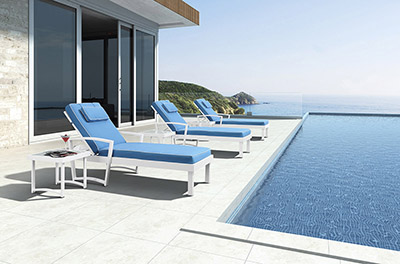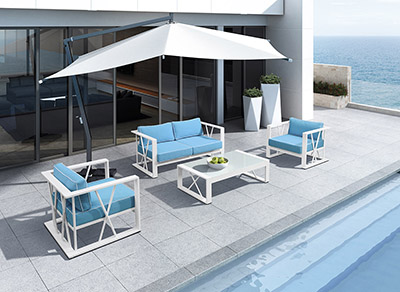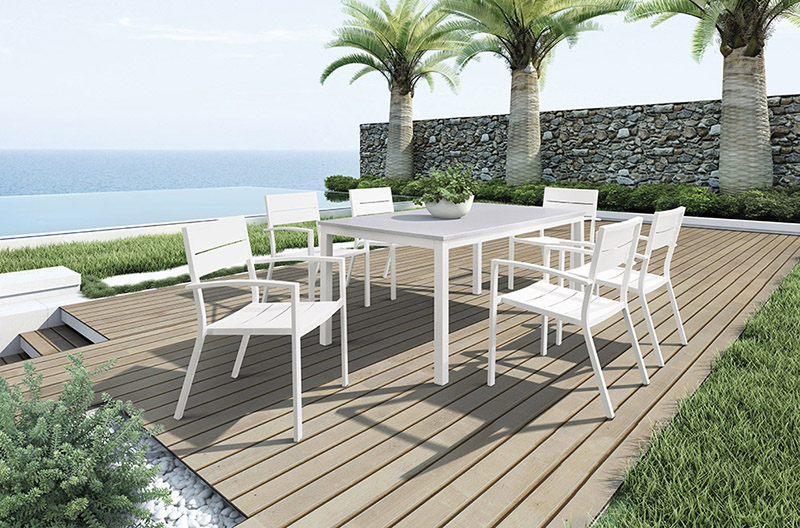1. Titanium Dioxide
In the paint industry, the most important white pigment is titanium dioxide (TiO2). Titanium dioxide has a high refractive index (rutile titanium dioxide n = 2.80, anatase titanium dioxide n = 2.55), and its light scattering ability is stronger than other white pigments. It has excellent hiding power in coloring paints, especially rutile Type titanium dioxide. Compared with other color pigments, titanium dioxide pigments show the best brightness among all white pigments. With these excellent optical properties, non-toxic and chemically inert, titanium dioxide can replace all other white pigments.
1. Particle size and particle size distribution
Many TiO2 crystals appear to be transparent, but the ultrafine particles of TiO2 pigments in the industry have high opacity (hiding power). When the particle size is about 0.25μm, the hiding power of titanium white pigment is the largest; when the particle size of TiO2 is larger or smaller than 0.25μm, the hiding power will be reduced. The particle size of 0.25 μm is optimal for the light wavelength of 400 nm. Near the maximum hiding power, as the particle size of the pigment changes, the color of the pigment also changes. TiO2 with a smaller particle size shows blue light, and TiO2 with a larger particle size shows yellow light.
The particle size distribution of TiO2 also has an effect on the performance of the coating. The hiding power or coloring strength per unit volume of titanium dioxide products with narrow particle size distribution are better than those with wide particle size distribution.
2. Surface treatment
The amount of titanium dioxide surface treatment agent is generally 0 ~ 20% of the amount of pigment, mainly inorganic surface treatment agent, such as Al2O3, SiO2, ZrO2 or their mixture. In addition, some organic surface treatment agents can also be used to improve the dispersion of titanium dioxide in different media, such as polyols, amines and silane coupling agents, and can be used as a grinding aid in the production of pigments.
The type and amount of surface treatment agent have a great influence on the performance of the pigment. With the increase in the amount of treatment agent, the particle size, oil absorption value and surface area of ​​the pigment will increase;
In PVCCPVC, the relationship between the type of surface treatment agent and optical properties can be seen. After Al2O3 treatment, the gloss of TiO2 is improved, but the durability is deteriorated, while SiO2 can improve the durability, but the product gloss is lower.
Second, zinc oxide
Zinc oxide (ZnO), also known as zinc white, is a white powder composed of small particles that are indefinite or needle-shaped. Zinc oxide is an alkaline compound that can react with trace free fatty acids to form zinc soap. It has a tendency to thicken the coating, and it will dissolve in the case of inorganic acids or acetic acid. Zinc oxide can make the coating flexible, firm and impermeable to water, thus preventing metal corrosion. But it should not be mixed with the base material with more free acid, so as not to produce more zinc soap, making the coating thick and not easy to apply. Zinc oxide's coloring power and hiding power are second only to zinc barium white and titanium white powder, but the color is pure white, not powdered, has good light resistance, heat resistance and weather resistance, and is suitable for exterior wall coatings.
In the design of paint formulations, zinc oxide can provide designers with many high-performance paint formulations. Zinc oxide has excellent mildew resistance and control of microbial fungi. Because ZnO has the ability to absorb ultraviolet light, it can form a coordination compound with the carboxylate ion in the coating to reduce the sensitivity of water in the coating film. Therefore, ZnO can improve the weather resistance and powder resistance of the coating film. In addition, since ZnO has a high refractive index, it also has a high hiding power. In general, ceramic and tank paints use indirect zinc oxide with small particle size and high purity; indoor paints and latex paints mostly use needle-like direct zinc oxide to make it have higher oil absorption value and improve suspension performance.
When ZnO is used in latex paint, if the amount is too large, it will cause the viscosity of the paint to increase greatly and reduce the stability of the paint. You can choose a suitable dispersant, TiO2 type, base material type, pH value, original viscosity and PVC Wait to get a stable paint formula.
Proper use of ZnO in coating formulations can not only obtain products with excellent performance, but also reduce costs. [next]
Three, lead white
Lead white is insoluble in water, soluble in acids and alkalis, and it will be darkened when exposed to H2S gas in the air for a long time, and it will become black lead sulfide. Match. Lead white can produce lead soap with oil with high acid value, which can enhance the fastness of the coating film, prevent powdering, light resistance and humidity resistance, and is especially suitable for the manufacture of outdoor paints, anti-rust paints and marine paints. The biggest disadvantage is its great toxicity to the human body, so use it with caution, especially for toy paints and indoor paints, the use of lead white is prohibited.
Four, zinc barium white
Zinc barium white (ZnS · BaSO4), also known as lithopone, is a mixture of zinc sulfide and barium sulfate. Zinc barium white is a neutral pigment, so it is often used with high acid value base materials to replace zinc oxide to avoid saponification of paint. Zinc barium white has white color, strong hiding power, good coloring power, alkali resistance and heat resistance, but it decomposes with acid, darkens with light, has poor weather resistance and is easy to powder. Zinc barium white is widely used as indoor paint; it is not suitable for outdoor paint due to its unstable effect on the atmosphere. In economical flat coatings for interior walls, lithopone powder is often used as a coloring pigment instead of part of titanium dioxide to reduce coating cost. Table 12 is the economical paint formulation of imitation wallpaper.
Five, antimony white
The main component of antimony white is Sb2O3, which is a neutral pigment. The crystal is fine and easy to grind, easily soluble in acid and alkali, and has a white color. Its hiding power is second only to titanium dioxide. It has good powdering, heat resistance and optical rotation resistance. It can be transformed into orange antimony sulfide in case of hydrogen sulfide. The soluble salt is non-toxic to human body, so it can be used instead of lead white. Antimony white does not react with fatty acids, so it will not be saponified in high acid value base materials, but it is not good for dryness in coatings alone, making the coating film softer, so it must be used in conjunction with zinc oxide to make the coating film Good dryness, tough after drying. Antimony white reacts with chlorine-containing resin at high temperature to produce antimony chloride, which can prevent the flame from spreading and play a role in fire prevention. Because of its relatively high density and high price, it is limited to fire retardant coatings.
Six, alkaline lead sulfate
Alkaline lead sulfate is a white pigment mainly based on 2PbSO · PbO. It is less toxic than lead white and does not react with fatty acids. The resulting coating film dries slower and is not resistant to dilute acids. It is soluble in alkalis and has better hiding power than lead. The white is small, and the anti-rust ability is better than the lead white. The combination of alkaline lead sulfate and zinc oxide can prevent fine cracks and cracks in the coating film, and it is not easy to powder. When the composition contains lead sulfide and carbon, it is bluish gray and is called "sublimation blue lead". The coating film made with sublimated blue lead is flexible but easy to powder, so it is often used in combination with zinc oxide. Neutral sulfur lead (PbSO4) is acid, alkali and light resistant, but has low hiding power and is only used as a body pigment.
Outdoor aluminum furniture is suit for outdoor patio usage for a long time. The material is 1.2mm , 1.5mm or 2.0mm thickness aluminum frame with powder-coated.
Secure and comfortable structure, simple design but elegance, is popular option for customer. Aluminum frame is welded and polished in meticulous style. Gently angled backs and wide arms encourage restful lounging. The industry`s best high-performing fabrics encase the thick, double-wrapped foam cushions.
· Traditional forms with a spacious, inviting scale
· Rust-resistant powder-coated aluminum frame.
· Comfortable 30 density cushion foam.
· Secure tempered glass for dining table and coffee table.
· Waterproof fabric for cushions.
Outdoor aluminum furniture with high quality and long time guaranty.



If you have any questions, please contact with us directly. Outdoor Aluminum Furniture are produced by Golden Eagle Outdoor Furniture Co.,ltd with High Quality and Good Appearance. Welcome you to visit our Factory for any inquiry, please send mail directly to us.
Aluminium Garden Furniture,Lawn Aluminium Garden Furniture,Outdoor Aluminium Garden Furniturel,Garden Aluminium Garden Furniture
Golden Eagle Outdoor Furniture Co., LTD. , https://www.geoutdoor.com